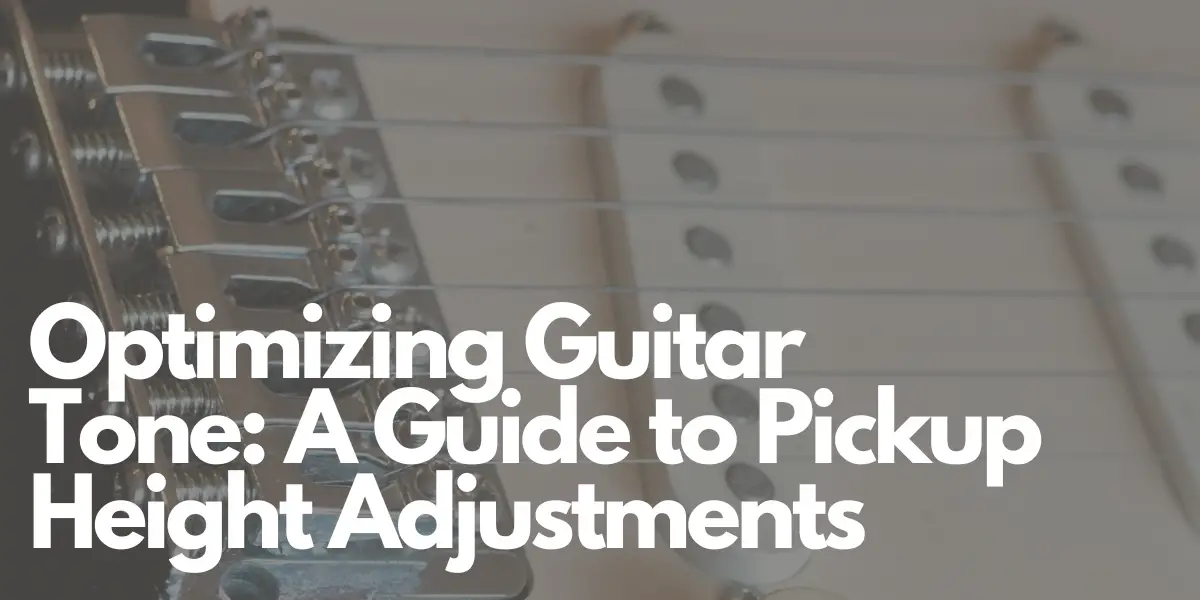Every guitar player, from a novice to a seasoned professional, understands the allure of achieving that perfect tone. Among the myriad ways to shape your guitar’s sound, the height adjustment of the guitar pickups stands out as both crucial and often underappreciated. This adjustment can dramatically enhance or degrade your guitar’s overall tonality, balance, and volume. If not done judiciously, it can spawn a host of issues.
Unraveling the Mystery of Pickup Height Adjustment
Why is it so vital? The height at which the pickup sits determines how effectively it captures the string’s vibration. This distance dictates the output and tonality, making it an essential facet of the guitar setup.
Potential Pitfalls of Incorrect Pickup Height
- Muddy or Boomy Output: Overly elevated pickups, especially towards the bass strings, can cause an overpowered and muddled sound, detracting from the clarity of notes and chords.
- Diminished Output: A pickup situated too far from the strings might not pick up the vibrations efficiently, resulting in a feeble and thin sound.
- Wolf Tones: A peculiar anomaly where certain frequencies ring out louder than others, often due to pickups being exceedingly close to the strings.
- String Pull Issues: When the magnetic field of the pickup is too strong and close, it can magnetically pull on the strings, causing tuning stability problems, especially evident when applying techniques like bending and vibrato.
Step-by-step to Adjusting Pickup Height
Tools Needed: A screwdriver that matches the adjustment screws of your pickups. These are commonly located on the pickup’s sides.
- To Raise: Turn the screws clockwise.
- To Lower: Turn counterclockwise.
It’s paramount to ensure adjustments are made with the guitar in its playing position to reflect the actual playing conditions.
General Recommendations for Different Pickups
- Humbuckers: These are typically set lower than single coils. Aim for about 1/8 inch (3mm) distance between the strings and the pickup poles.
- Single-coil pickups: Positioned a tad higher than humbuckers, a good starting point is roughly 1/16 inch (1.5mm) distance from the strings.
After your initial setup, invest time in playing and listening. Adjust incrementally to match your tonal preferences, ensuring there’s a balanced output across pickups.
Advanced Troubleshooting for Persistent Tone Issues
- Review the Pickup Wiring: Even minor wiring issues can result in a compromised output. Ensure everything is correctly soldered and connected.
- Evaluate Pickup Magnets: Over time, magnets can degrade. If they’re weakened or damaged, it might be time for a replacement.
- Experiment with Different Pickups: The world of pickups is vast and varied. If you’re not achieving the desired sound, consider exploring other types.
If self-adjustments seem daunting or yield unsatisfactory results, it’s always wise to approach a seasoned guitar technician.
Conclusion: The Path to Tonal Perfection
While guitars are often praised for their design, craftsmanship, or the type of wood used, the minutiae of setup, especially pickup height adjustment, play an equally pivotal role in sculpting the sound. By understanding and mastering this aspect, guitarists can unlock the true potential of their instrument, ensuring every note played resonates with precision, clarity, and intent. Whether a weekend hobbyist or a touring musician, the journey towards tonal perfection is a rewarding endeavor that every guitarist should embark upon.
Author: Mike P
Hi! My name is Mike! I’ve been an apartment producer/musician for 10+ years. I’ve played in punk bands, released EDM tunes on Beatport and iTunes, and have a semi-successful stock music portfolio. Read more…


